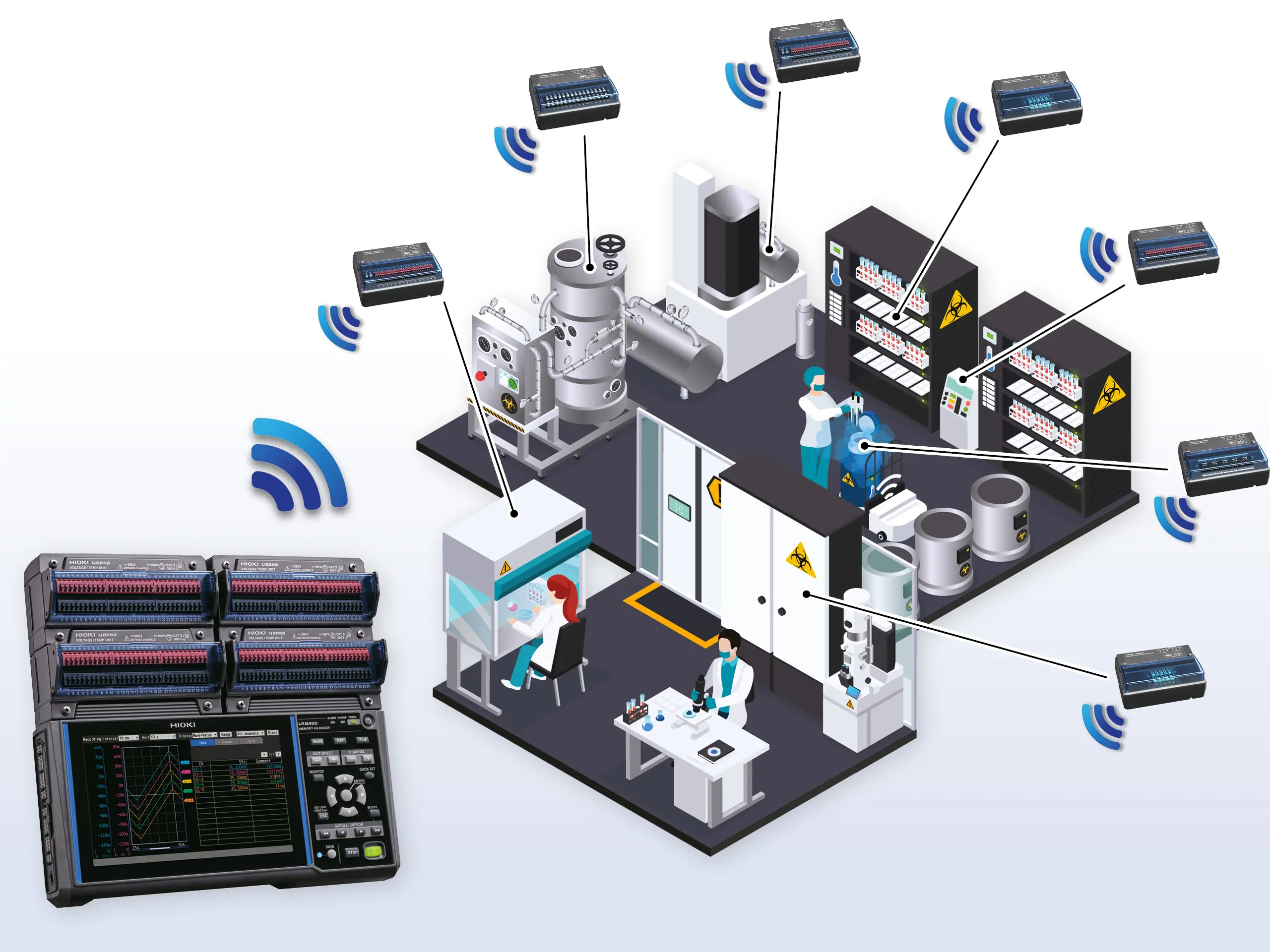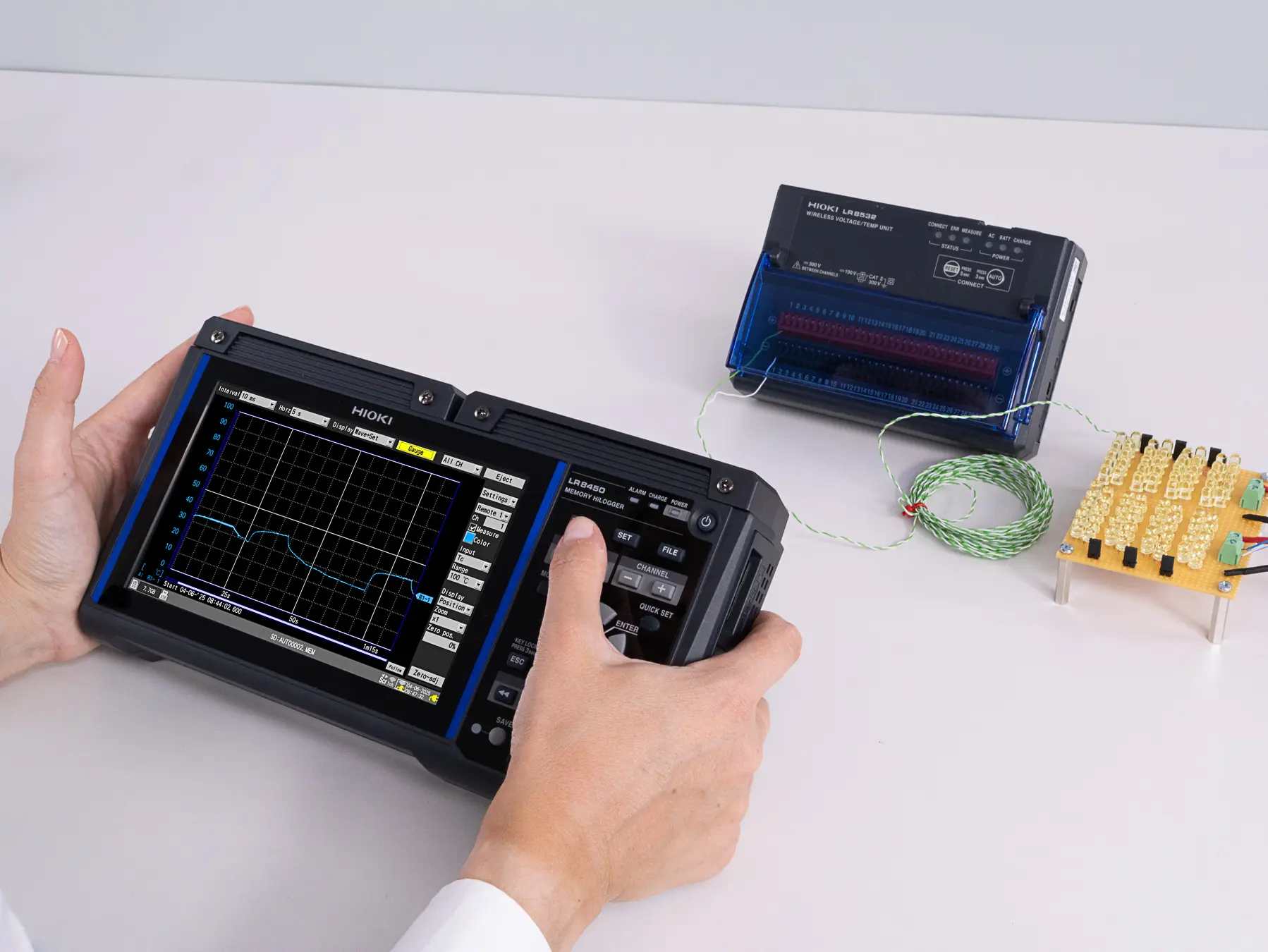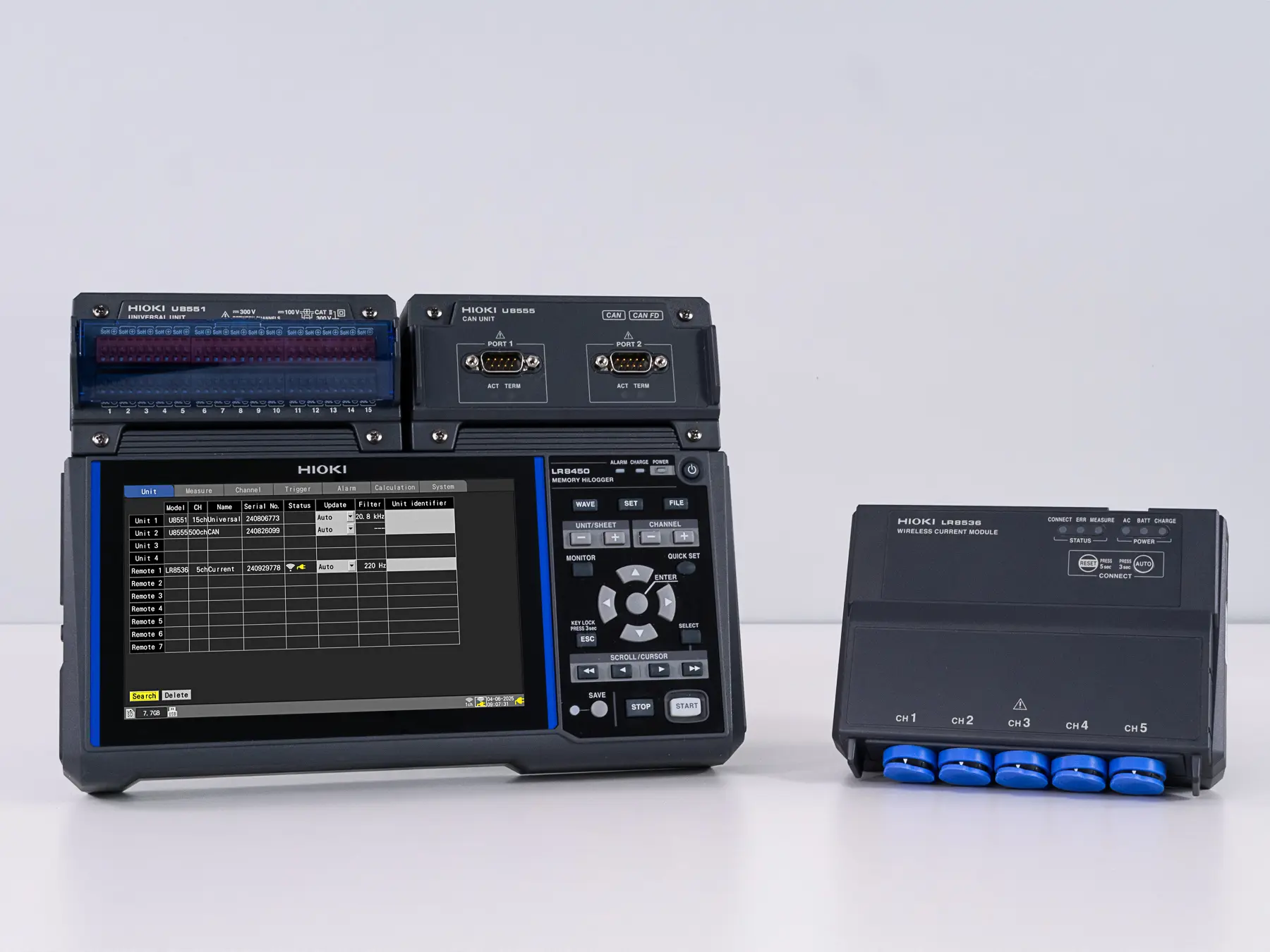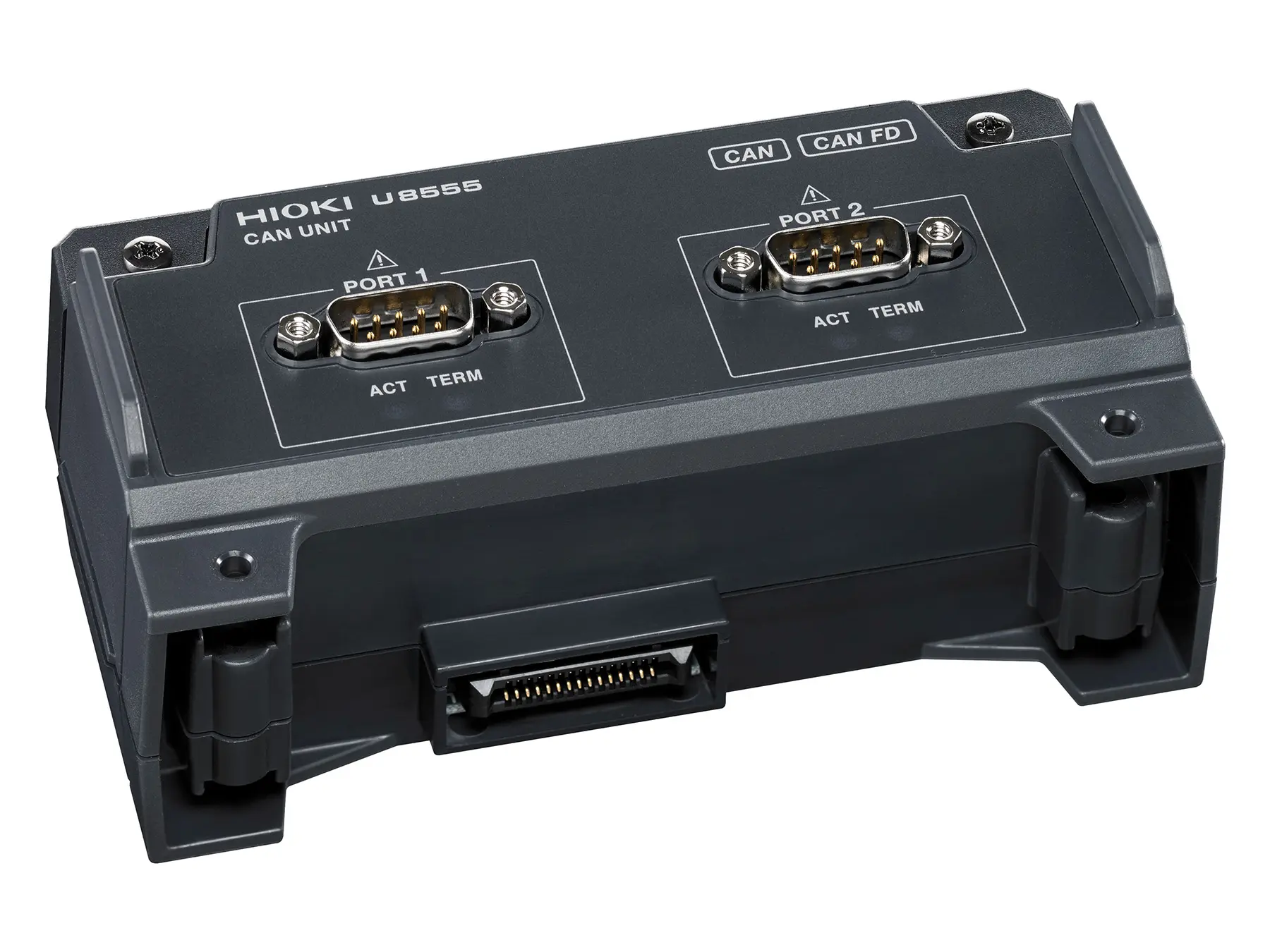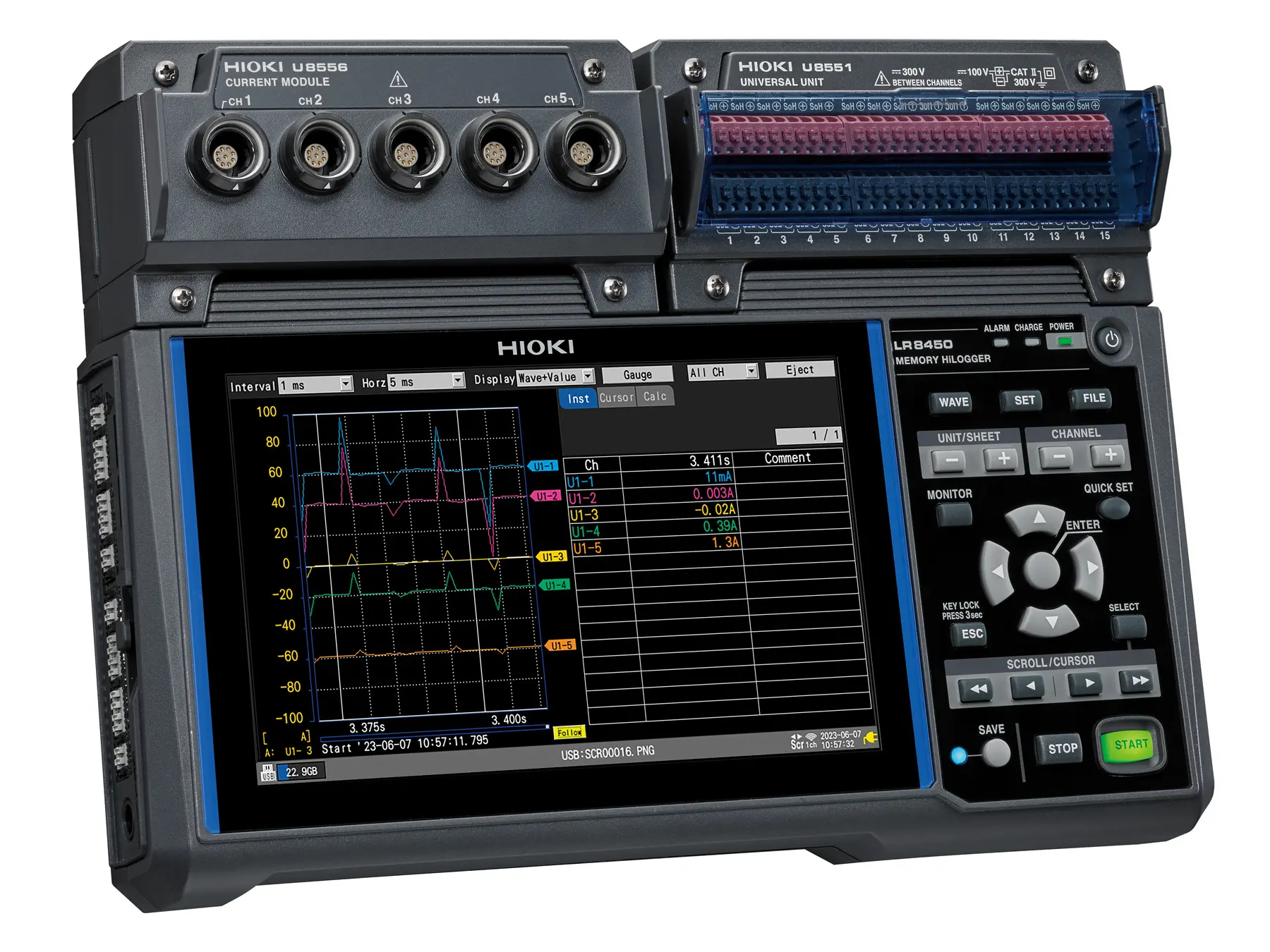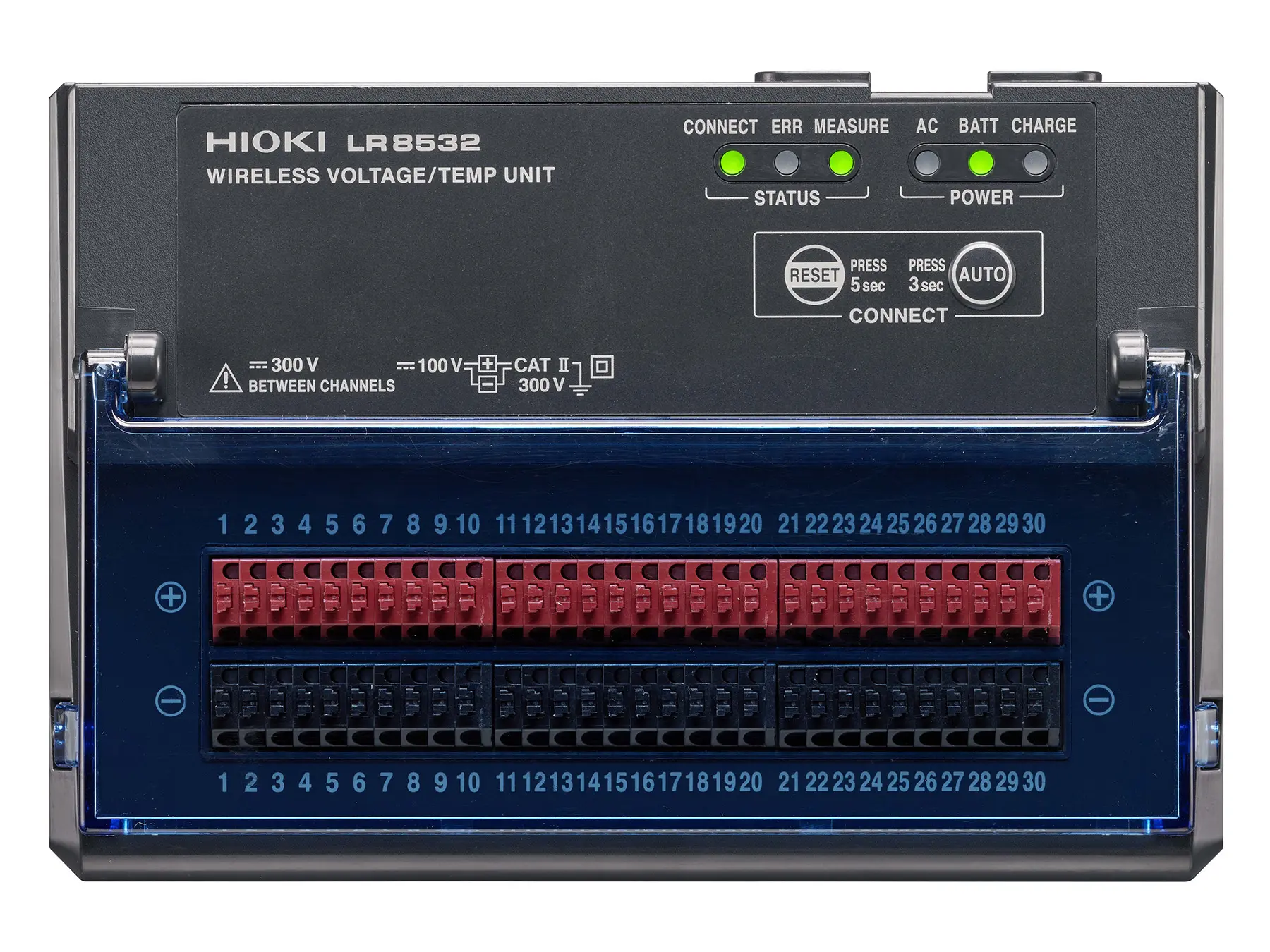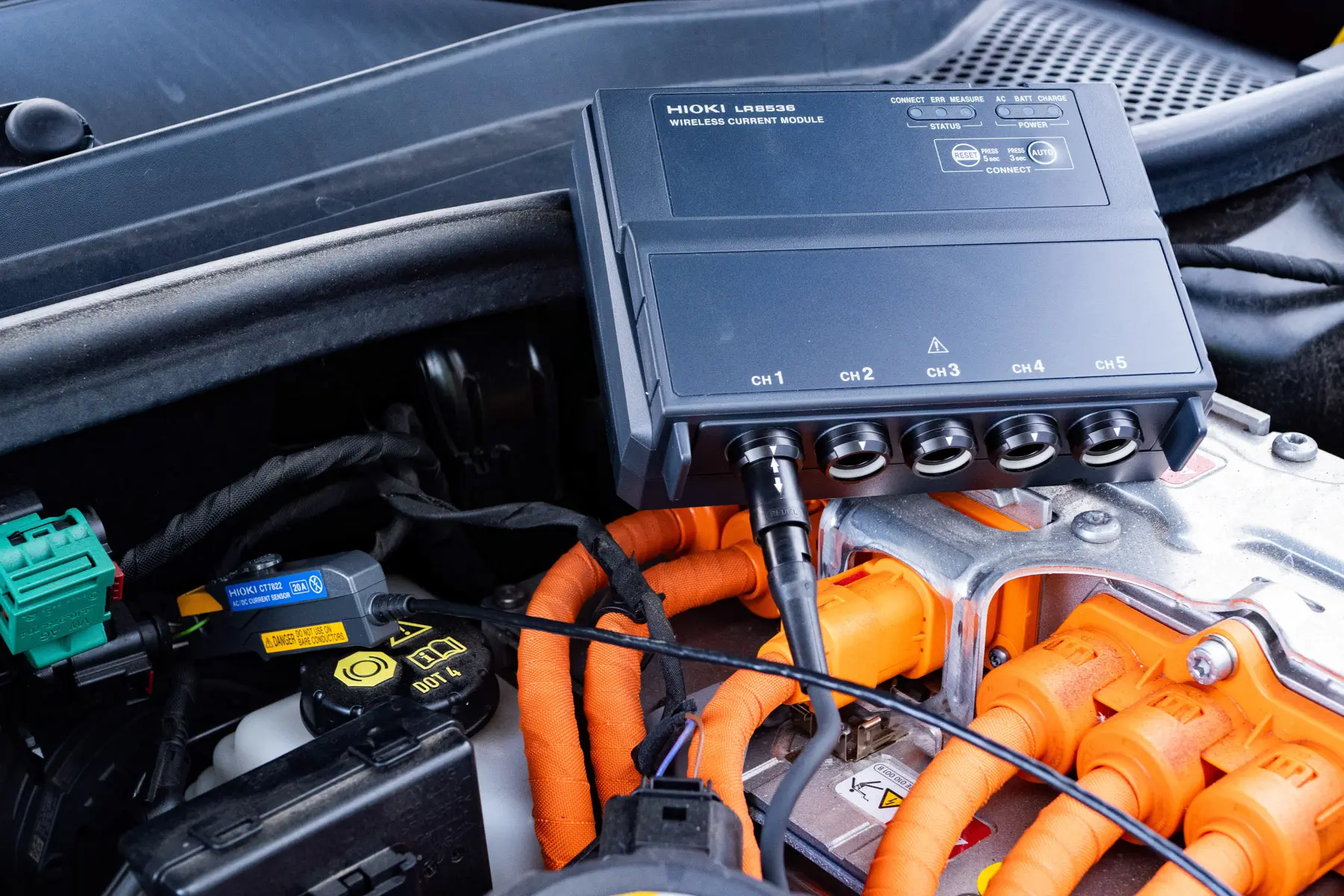Wireless logging: The DAQ game-changer
As measurement demands become more complex and dynamic, the choice of modular and wireless data acquisition systems, such as the LR8450-01 Data Logger, is no longer just a convenience - it's a strategic enabler. Data acquisition devices now offer the precision of lab-grade instrumentation combined with the freedom of untethered deployment.
Figure 1: Wireless data monitoring that’s changing the way you work - flexible, efficient, remote.
In this article, we explore three smart ways to take advantage of wireless capability in real-world measurement scenarios:
- Remote data collection using wireless and plug-in modules
- Direct wireless access via PC or tablet for real-time control and monitoring
- Wireless communication over existing network infrastructure, enabling full remote access without distance limitations
Wireless technology is changing the game in testing and monitoring – enhancing mobility, scalability, and data continuity. Let’s take a closer look.
Flexible by design: distributed data collection
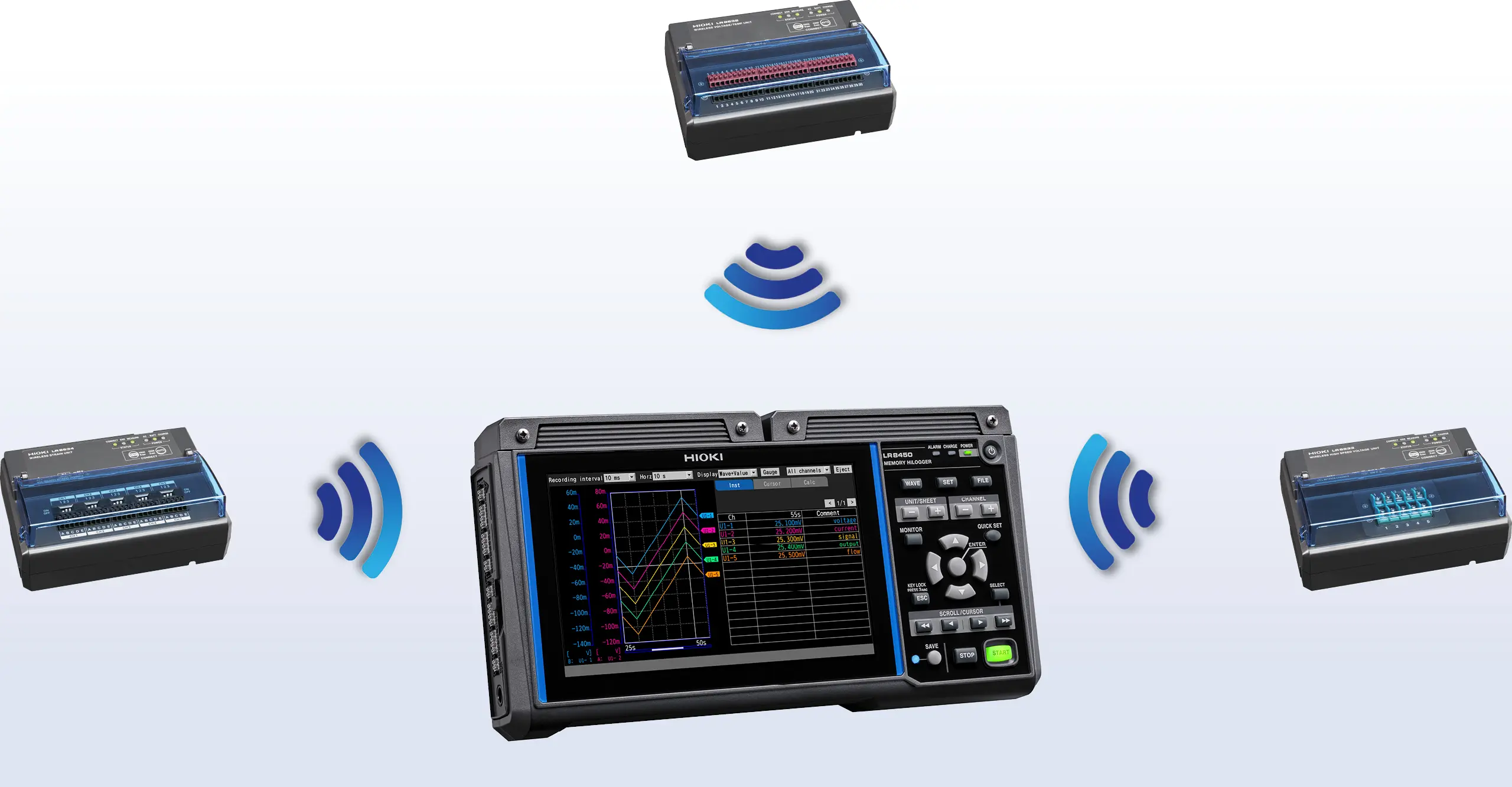
One of the most important aspects of wireless data logging is the ability to collect data from multiple, dispersed locations – simultaneously and in sync. Instruments like the LR8450-01 Data Logger allow for the connection of up to seven wireless modules and four plug-in modules to a single main unit, supporting up to 330 channels. Among others you can monitor voltage, temperature, current, strain or CAN signals in real-time. The update interval is specified for every module and does not change with the addition of more modules, whether plug-in or wireless. This capability makes it easier than ever to capture fast-changing signals or observe multiple points in a system without compromising accuracy.
If you are working in confined or mobile spaces - inside of vehicles, across production floors, or within environmental chambers – wireless modules can be positioned exactly where needed. No drilling, no cable trays, no invasive setups. With a line-of-sight wireless range of up to 30 meters, the LR8450-01 offers plenty of flexibility to adapt to complex, real-world testing environments.
The wireless modules are designed with flexibility and resilience in mind:
- Dual power options allow each module to be powered via an AC adapter or an optional battery pack.
- On battery alone, wireless modules can operate for up to 9 hours, providing ample runtime for day-long tests or remote deployments.
- Even better, if a module is connected to both an AC source and a battery, it will automatically switch to battery in case of a power outage – ensuring uninterrupted data logging.
This kind of autonomy is particularly useful in field testing or mobile applications, where power supply might be inconsistent.
Data integrity is crucial, especially when working under real-world, less-than-perfect conditions. That’s why the wireless modules feature an internal buffer memory that can store up to 5 minutes of data in the event of a wireless connection drop. Once communication is restored, all buffered data is automatically sent back to the main unit, filling in the gaps so that no measurement is lost.
And for added peace of mind, the system can be configured to issue alarms if there’s a communication failure or if a module's battery level drops too low – helping users react proactively.
Wireless data logging also brings the convenience of remote visibility giving you the possibility to simultaneously monitor the measurement data from different locations in real-time on the LR8450-01 display.
Control from anywhere: wireless access via PC or Tablet
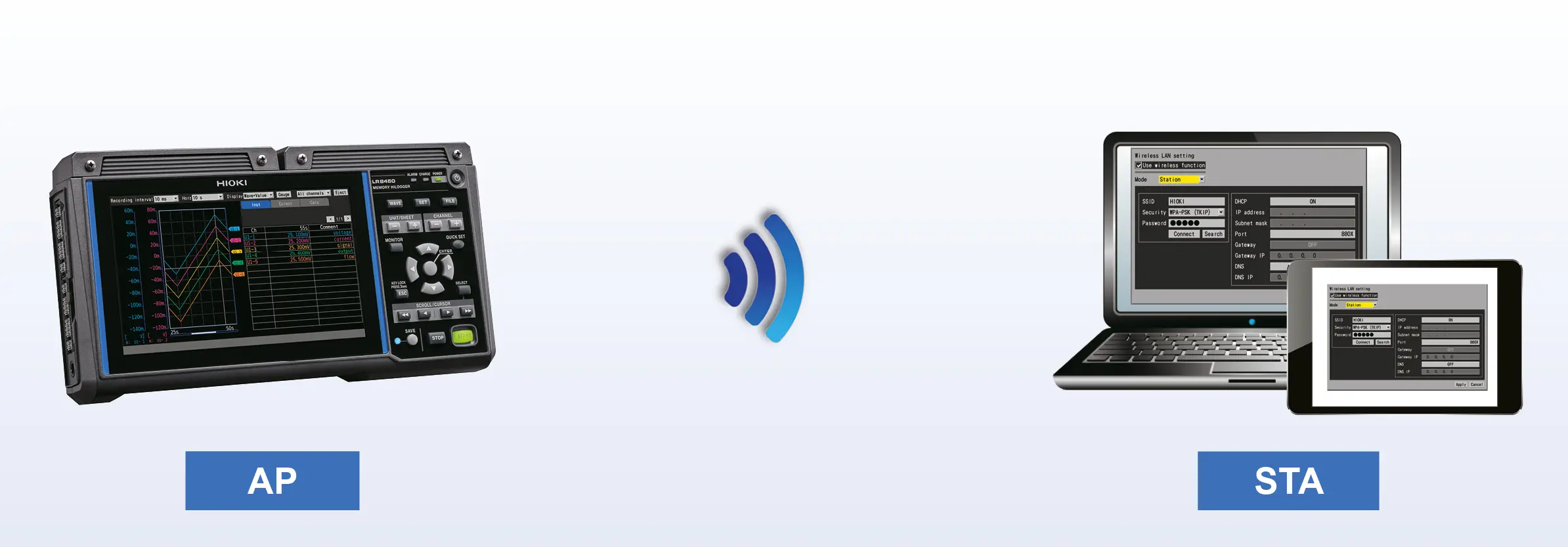
Another key advantage of the wireless capability of the LR8450-01 Data Logger is the ability to connect directly to a PC or tablet – providing users with full visibility and remote control without having to be physically near the unit. Whether you're monitoring a test from a neighboring room or coordinating from a central control area, this feature transforms how you interact with your data.
Within a line-of-sight wireless range of up to 30 meters, the LR8450-01 enables seamless access through a standard web browser. Users can start or stop recordings, check live readings, and retrieve stored files – all without the need for dedicated software. This is particularly valuable when the logger is placed in moving vehicles, with high-vibration equipment, or in other environments where traditional wiring would be difficult or disruptive.
With this function, the logger can be configured with up to four plug-in modules, enabling simultaneous measurement of up to 120 channels.
Beyond line of sight: wireless communication via shared networks
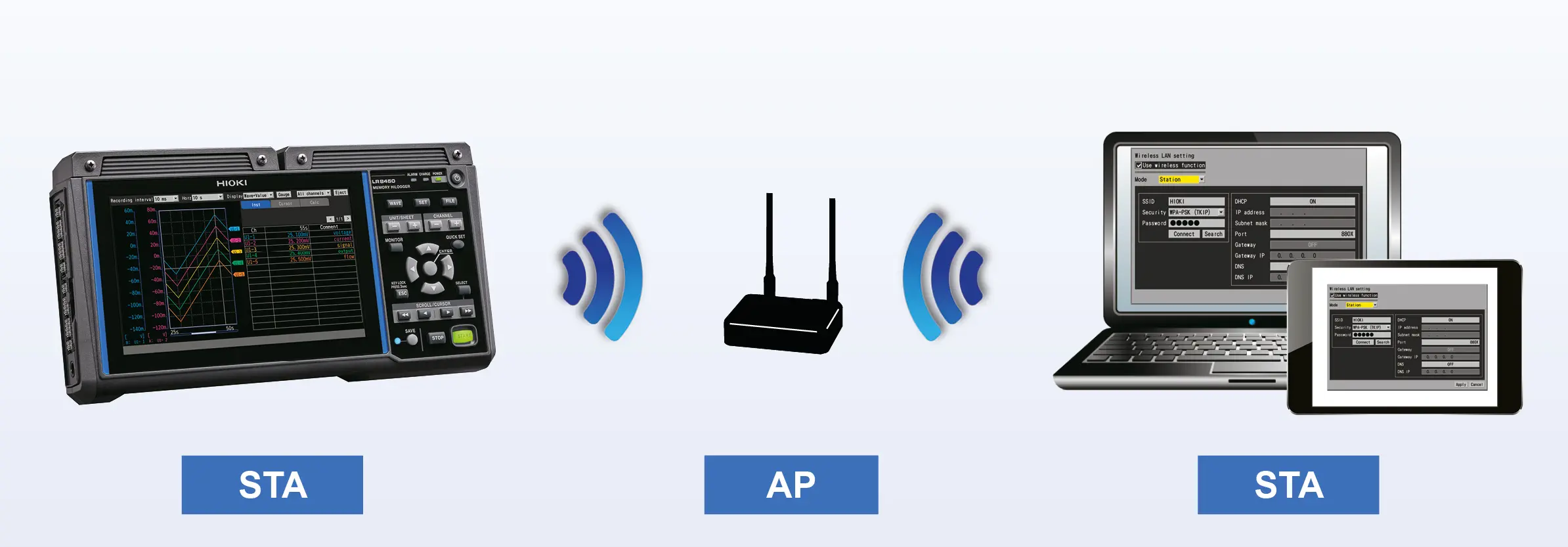
For more advanced setups, the wireless data logger LR8450-01 can be connected to an existing wireless access point (AP), allowing both the logger and the PC to become part of the same internal network. Unlike the connection with the wireless modules or direct communication with a PC, this setup is not limited by physical distance – as long as both devices are on the same network, full access is possible.
This approach is ideal for teams who want to monitor and control measurements from anywhere within a facility, or even across buildings, without needing to stay within a fixed wireless range. It is especially useful for centralized testing environments or distributed systems, where multiple users need to access the logger remotely.
Whether you're running long-term monitoring in a test lab, or coordinating data collection across several departments, network-based access provides the freedom to stay connected – without being tethered to the device.
Beyond convenience: The smarter way to measure
Wireless data logging isn’t just a modern upgrade - it’s a fundamental shift in how we approach measurement. By eliminating the need for cables, it unlocks new levels of flexibility and safety, particularly in confined or mobile environments where every wire adds complexity and risk.
It also improves operational efficiency dramatically. Setup times can be dramatically reduced, test configurations become easier to replicate or scale, and modules can be reused across different projects without reinstallation.
Perhaps most importantly, the LR8450-01 ’s wireless modules are built for dependable, autonomous operation – capturing data continuously, even in the face of communication dropouts or power interruptions, thanks to built-in buffer memory.
In short, wireless isn’t just about cutting cords. It’s about working smarter, adapting faster, and capturing data wherever your tests take you.

